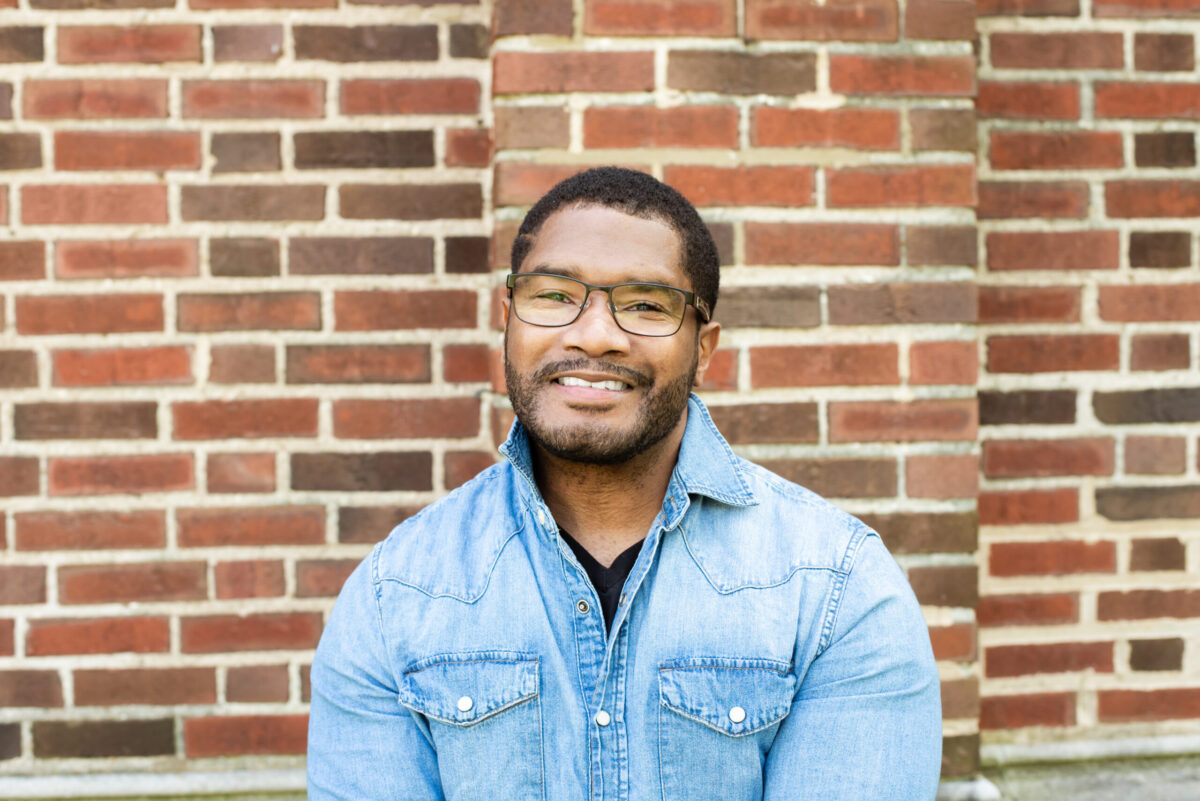Poet, dancer, cultural anthropologist, visual artist, educator—Jason Vasser-Elong brings his unique core of experience and knowledge to his position as Museum Educator at CAM. His teaching resume includes Harris-Stowe University, Webster University, UM-St. Louis, and guest lecturing at Washington University in Saint Louis. His list of courses taught include, African American Literature, American Literature, English Literautre, Modern English Grammar, Beginning and Advanced Composition, Women and Gender Studies, Feminist and Gender Theory, Ethnographic Field Methods and others. His first volume of poems, Shrimp, was published by 2Leaf Press in 2018, and is currently distributed by the University of Chicago Press. The collection explores the search for personal identity through a post-colonial lens, touching on the tracing of his own history to places as near as Mississippi and as far as Cameroon. St. Louis born and raised, a product of St. Louis Public Schools, Vasser-Elong has never traveled abroad but his life’s journey has taken him far.
His mother is a semi-retired schoolteacher. She taught at McClure High School while her son was attending. ”It’s very awkward to have your mother teaching at the same high school you’re in. I had to be good all the time. If I wasn’t, it was not too long before it got down the hall.” His father was a magician—“close-up tricks; he worked with cards and coins. He listened to an eclectic array of music. He also drew a lot. My initial artistic exposure was from my father.”
At the former Marquette Visual and Performing Arts Middle School, the first poetry that hit him hard was Paul Laurence Dunbar’s “A Negro Love Song”: Seen my lady home las’ night / Jump back, honey, jump back.” Dance was a powerful draw too. He danced at the Ray Parks Academy, Best Talent Center, and was “trained in ballet and modern” and dreamed of joining Alvin Ailey American Dance Theater.
But Vasser-Elong considered the long term, and dancers’ bodies only take so much, which means short careers. “I chose anthropology, where I could look into cultures, different belief systems.” With a focus in cultural anthropology as an undergraduate at UM-St. Louis, he continued on to an MFA in poetry. After years of teaching at the adjunct level, and writing and publishing a book of poems, he joined the Contemporary Art Museum St. Louis in 2021.
“I love working with students and seeing them figure things out,” he says, “to see them figure out the society in which they live.” His job is “to help students unpack that world in a safe space.” He believes his combination of education, experience, and interests is “very tactile.” He’s studied and examined cultures, and “cultures are learned and shared. Artists are influenced by a cultural lens.”
“Artists are artists,” he affirms, and one art form is transferable to another: dance, poetry, painting, drawing, sculpture, movement, line, color, shape, form, pattern, texture—different dialects sharing a common language.
He had his first experience teaching Teen Museum Studies over the summer, and was immediately impressed with the dedication of the students. “They showed up ready to work, ready to accept a certain amount of responsibility.” LEAP Middle School Initiative students he found to be shy, which comes with the age, “but they come with levels of interest that will carry them through the program.”
In LEAP sessions he works with Resident Teaching Artist Lillian Gardner, “and we remind ourselves that these are young artists. We give them space to talk with each other, space to develop a sense of comradery.” The class is all female, so he “wants them to see me less and Lillian more. I want them to work together without my presence. It’s neat to be able to lean into the current exhibitions, since they all feature women artists. It allows them to latch onto possibilities.”
Vasser-Elong says his greatest excitement among the students comes from “finding out what they know and how they know it. How did they know about James Baldwin, Gertrude Stein? This sets the tone of how they will be. How do you trust sources? What they know, and how they know it.”
—Eddie Silva
